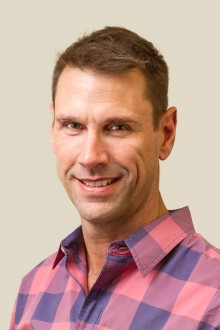
The OMAX® Corp., Kent, Wash., recently welcomed Stephen Bruner to its senior management team as vice president of marketing. Bruner will oversee the company’s marketing, technical training and inside sales teams and work closely with staff on program planning, brand development and lead generation and nurturing.
Bruner, who has nearly 20 years experience executing highly successful integrated product marketing strategies that drive business growth, led B2B marketing and vertical market management for Seattle-based Precor, a leader in the fitness industry. In this role, he implemented strategic marketing campaigns, drove innovative competitive intelligence efforts, developed content for global distribution and managed overall channel partner communications.
According to Dr. John Cheung, CEO and co-founder of OMAX Corporation, Bruner joins the company at an exciting time. Not only did Seattle Business Magazine recently name OMAX Corp. its “Manufacturer of the Year” as part of the “2015 Washington Manufacturing Awards,” the company also is in the midst of increasing its equipment asset base, expanding its operations and developing new technologies — all of which will better serve customers who range in scope from parts manufacturers to metal service centers to educational institutions.
Bruner will apply his strong analytical skills and process management expertise to implement new integrated product marketing techniques that further enhance the sales and support of the company’s abrasive waterjet solutions, which include OMAX and MAXIEM® JetMachining® Centers.
Contact Details
Related Glossary Terms
- abrasive
abrasive
Substance used for grinding, honing, lapping, superfinishing and polishing. Examples include garnet, emery, corundum, silicon carbide, cubic boron nitride and diamond in various grit sizes.
- abrasive waterjet ( AWJ)
abrasive waterjet ( AWJ)
System that uses high-pressure waterjets in combination with a slurry of fine abrasive grains to machine materials. See waterjet cutting.
- centers
centers
Cone-shaped pins that support a workpiece by one or two ends during machining. The centers fit into holes drilled in the workpiece ends. Centers that turn with the workpiece are called “live” centers; those that do not are called “dead” centers.







